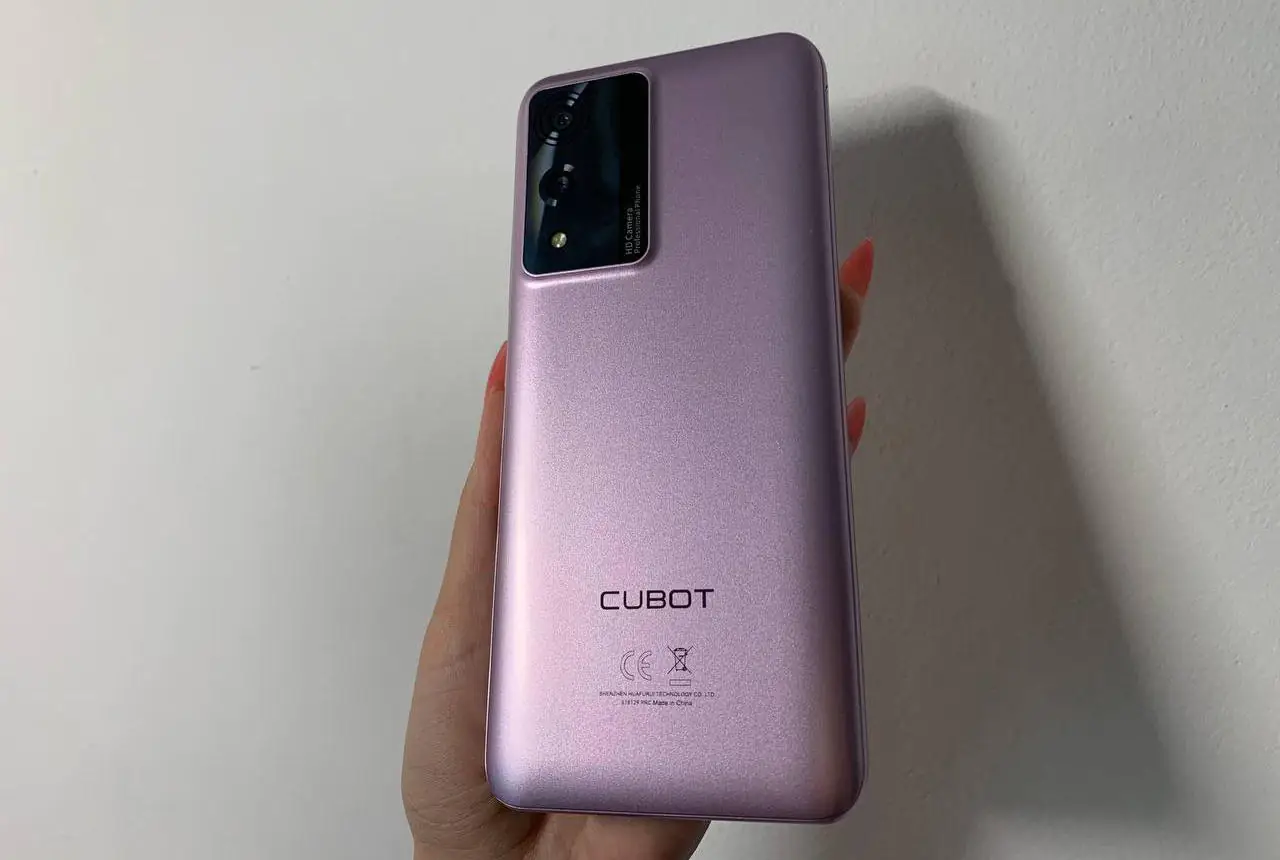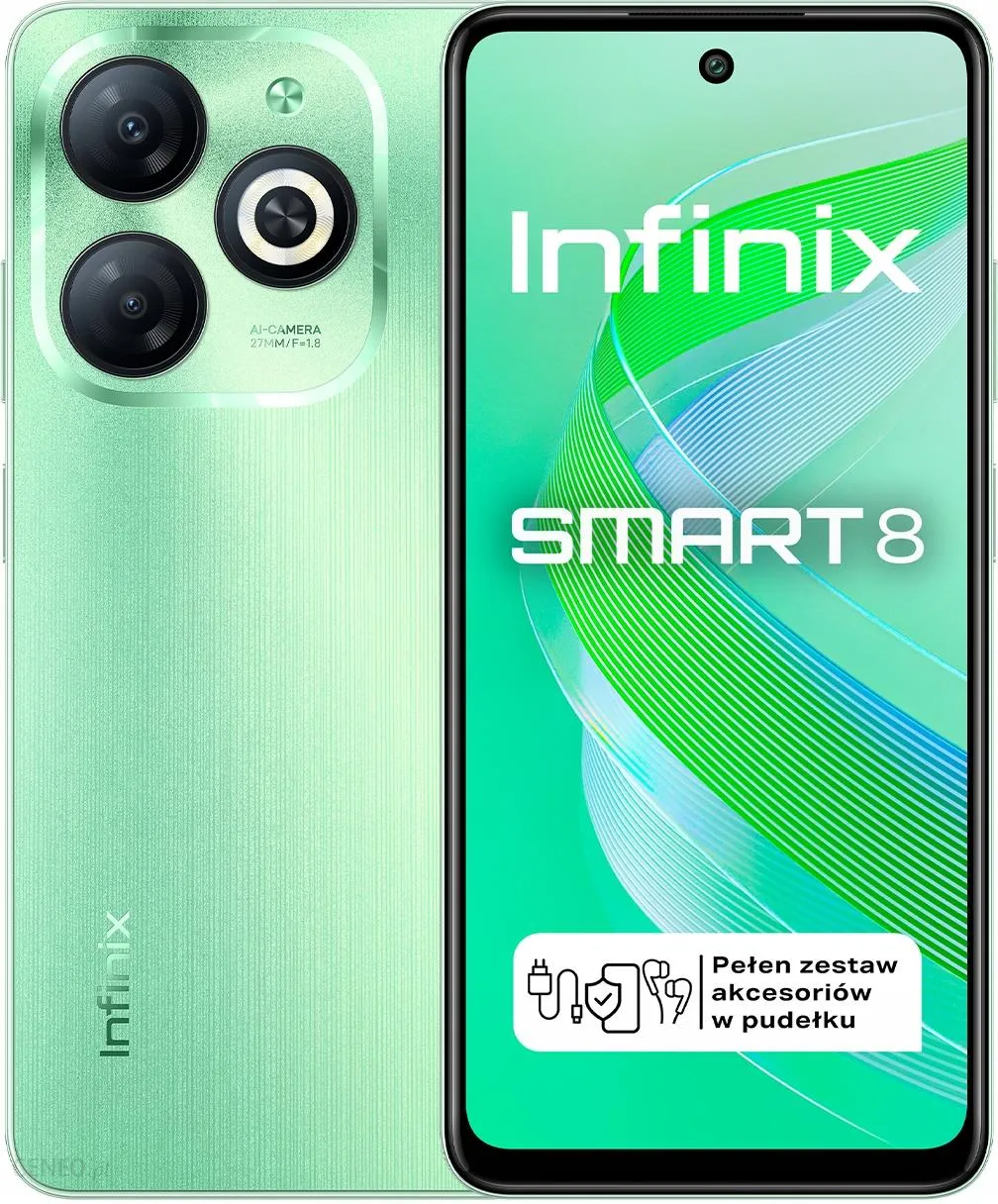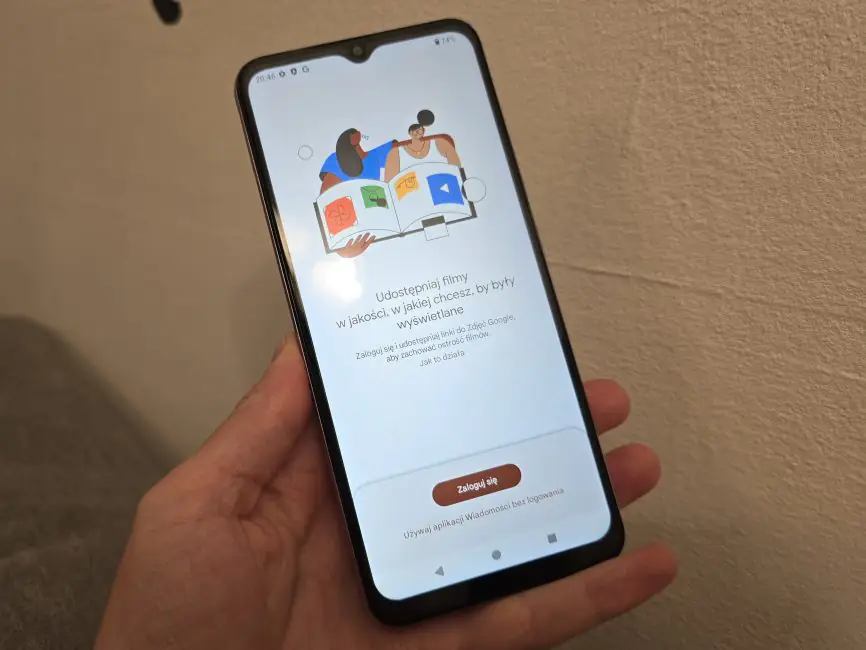© ROOT-NATION.com - Use of content is permitted with a backlink.
Today’s smartphone market is flooded with many brands, each vying for consumers’ attention with their features and innovative designs. Among them, the Chinese company Cubot stands out by offering budget devices with good technical specifications. One of the latest models from this company is the Cubot A10, priced at just around $100. Today, we will take a closer look at it, analyze whether it is worth buying, and discuss how well it performs in everyday use.

At first glance, the Cubot A10 doesn’t seem to stand out from other offerings on the market. However, this initial impression is deceptive. As soon as the device arrived for review, I was curious about its price, thinking it would surely be over $200. It turned out I was wrong. You can purchase the new Cubot A10 with 4GB RAM and 128GB storage on AliExpress for just $77 / €71, and in Ukrainian stores for around $97 / €90. This is a very affordable model, which isn’t surprising, as the company considers users and their budgets while improving their offerings.
Does such a low price lead to excessive simplification? That’s what we need to find out. The good news is that the device is available in not just one, but three interesting colors: pink, blue, and classic black—so every buyer can find something that suits their taste.

CUBOT A10 Specifications
- Display: IPS TFT 6.56”, 20:9, 1612×720, 269 PPI, 90 Hz
- Processor: 8-core UNISOC T606 8×1.6 GHz, Cortex-A75 / A55
- Video card: ARM Mali-G57 MP1
- RAM and permanent memory: 4 GB and 128 GB expandable up to 8 GB
- SIM card slot: dual SIM (Nano-SIM)
- Cameras:
- Main module: 48 megapixels
- Front camera: 16 megapixels
- Sound: mono, 3.5 mm mini-jack
- Battery: 5100 mAh
- Operating system: Android 14
- Wireless technologies: Wi-Fi 5, Bluetooth 5.0, Dual SIM, GPS, GLONASS, GALILEO
- NFC: no
- Dimensions: 10.4×165.6×75.5 mm
- Weight: 200 g
Read also: CUBOT X90 Smartphone Review: Budget Flagship from China
Package contents
In a charming blue box, we find the phone itself, a SIM tray removal key, documentation, a 10W charger, a charging cable, and a clear case. Additionally, a protective film is already applied to the screen, which I consider to be part of the package.
Design and ergonomics
Regarding the design, I had mixed feelings. On one hand, the design is decent, but on the other hand, it looks cheap, and I’ll explain why. Let’s start with the placement of components: on the right side, there’s the power button and volume rocker. On the left side, you’ll only find the SIM card tray. The bottom edge has a Type-C port and a monophonic speaker. On the top edge, there’s a rare feature nowadays—a 3.5mm mini-jack for wired headphones.
The screen features a droplet-shaped notch for the camera. Additionally, there’s a fairly large chin and bezels that visually reduce the display area, with a screen-to-body ratio of just 69.2%.
The body is mostly plastic with rounded corners. The back panel of the review unit comes in an interesting light pink color. It features a black camera island that integrates well with the body. A nice touch is that the back hardly shows scratches or signs of wear.
Why did I say cheap, because the phone looks quite traditional? This is my subjective opinion, as I have seen many smartphones and have something to compare it to. First of all, it lacks the fashionable flat sides, and the black camera island doesn’t go well with the pink one. Otherwise, as I said, the appearance is quite normal.
The phone measures 10.4 × 165.6 × 75.5 mm and weighs just 200 grams, which is quite light. It fits comfortably in the hand, although it can be a bit slippery when your hand is sweaty, so I recommend using a case for safety. Additionally, you can easily place the device on a flat surface without it wobbling, as the camera island barely protrudes beyond the case.

Read also: CUBOT King Kong Ace 3 Review: Rugged Smartphone with Dual Displays
Display
Cubot A10 has a 6.56-inch IPS TFT HD+ screen. The display has an aspect ratio of 20:9 and a resolution of 1612×720 pixels, which gives a density of 269 ppi. The maximum refresh rate is 90 Hz, which is not bad for this price category, and there is also an adaptive mode that adjusts the refresh rate according to the selected content.
 The screen may not boast the contrast and colors of AMOLED displays, but it’s comfortable to use both indoors and outside on sunny days. Overall, for an IPS panel and considering the price of around $100, it’s VERY good. It offers decent viewing angles and detail, which enhances the overall user experience.
The screen may not boast the contrast and colors of AMOLED displays, but it’s comfortable to use both indoors and outside on sunny days. Overall, for an IPS panel and considering the price of around $100, it’s VERY good. It offers decent viewing angles and detail, which enhances the overall user experience.
In the settings, you can adjust the font, display modes, contrast, enable night mode (which reduces blue light in the evening), and even increase the brightness of displayed content, such as YouTube videos or photos.
Sound and tactile sensations
Unfortunately, stereo sound is not an option here, but I can note that the A10 delivers loud audio. You can also use wired headphones, as there’s a mini-jack port. There’s no equalizer in the settings, but you can adjust the haptic feedback for selected actions. The haptic feedback is, however, quite basic, typical of budget models.

Read also: Cubot Hafury V1 Review: Intriguing Budget Phone with Two Screens
Unlocking methods
I was surprised to find that the CUBOT A10 lacks a fingerprint scanner, as it wouldn’t have been that expensive to include. It’s a pity because even budget-conscious users have come to expect this type of unlocking. For me, fingerprint recognition is the most convenient form of data protection. Here, we only have a PIN code and facial recognition. Face ID works without issues, but in the dark, the phone failed to recognize me. However, it’s an unreliable technology— the phone can be “tricked” even with a phot..
Connectivity and data transfer
The Cubot A10 supports Wi-Fi 5, Bluetooth 5.0, and LTE. It works with two SIM cards. However, another simplification is the absence of NFC, which significantly complicates the process of using the phone for payments in stores—it essentially makes it impossible. While you can put a card under the case, buy a watch with payment functionality, etc., having NFC would have been more convenient.

Cameras
The phone has only two cameras: a 48 MP main camera and a 16 MP selfie camera. Starting with the selfies— they turn out quite good, and there are filters to enhance your appearance. However, even if you don’t use them, you’ll still be satisfied as the shots are of good quality, and I had no complaints about them.
The main sensor also takes decent shots, with good quality and vibrant colors—see the photos. However, when photographing moving objects, the module doesn’t always focus well, resulting in blurry images—this is evident in the photo of my cat. Despite this, I still managed to get a new “profile” picture for him.
I can’t complain about the night photos either. For this price, we get a decent result—warm tones, no artificial effects, and minimal digital noise or blurring.
Regarding video, there’s no stabilization, but otherwise, the video quality is great, with a maximum resolution of Full HD at 30 fps.


In the camera interface, you can enable Night mode (though the difference is minimal), HD mode (full-resolution photos, but again, the difference is small), Portrait mode, Time-lapse, and Slow-motion, as well as adjust various settings.
Read also: CUBOT X1 Smartwatch Review: Calls, AMOLED, and 100 Days Without Charging
Software
The CUBOT A10 runs on a clean Android 14. The apps and controls are familiar, and there were no major issues. However, there was a catch. The system occasionally lagged when I tried to upload photos from the gallery to Google Drive. Sometimes, performance was not as smooth as one might expect. I attribute this to the device’s modest hardware, and hopefully, future updates will improve the situation.
There is no bloatware, meaning no unnecessary pre-installed apps—take note, realme! Various gestures are available. A cool feature is Smart Control, which wakes the phone when you pick it up. There are also many accessibility features for users with disabilities.
Performance
The Cubot A10 is equipped with an 8-core UNISOC T606 processor, featuring Cortex-A75 and Cortex-A55 cores clocked at 1.6 GHz. The GPU is the ARM Mali-G57 MP1. It comes with 4 GB of RAM, which isn’t a lot, but you can add an additional 4 GB from the internal storage of 128 GB. This will significantly boost performance as it’s virtual memory, though it’s still better than having nothing. The internal storage can be expanded with a microSD card, but you’ll need to choose between using two SIM cards or one SIM card and a memory card.

With this processor, the device delivers adequate performance for everyday tasks such as browsing the web, using social media, basic apps (like banking or ride-hailing), and less demanding games. While you shouldn’t expect turbo-speed performance, it will be perfectly acceptable for its target audience.

Battery and operating time
The manufacturer claims that the CUBOT A10 features a 5100 mAh battery, which provides up to 2-3 days of use, and up to 6-7 days in standby mode. In practice, these results are quite accurate. Given that the device lacks high-performance components and a high-resolution screen, and is not a gaming phone that requires constant cooling, this battery life is indeed impressive.

In my case, the smartphone lasted 2.5 days. During this time, I engaged in typical activities such as playing casual games, responding to text messages, browsing social media, taking outdoor photos, and fiddling with settings. Overall, any user who is not focused on gaming or professional photo and video editing will likely be satisfied with the battery life of the CUBOT A10.

There’s no fast charging here; the included charger is only rated at 10W. It takes nearly 2 hours to fully charge the A10.
Read also: Cubot Hafury Meet Review: Stylish Smartphone
Summary and competitors
CUBOT is a company that primarily focuses on budget-friendly solutions for a wide audience. The new CUBOT A10 has its quirks, which I feel are quite significant compromises. These include the lack of a fingerprint scanner, no NFC, and no stereo speakers. However, it’s important to remember that for a price under $100, we can’t expect to have everything we’re used to.
But to conclude, let’s highlight the positive aspects. First, the device has a pleasant color, good packaging, a decent IPS screen, and cameras that will produce satisfactory photos. Additionally, the smartphone offers good battery life, and the “clean” Android without ads will be a reliable companion for everyday tasks. And of course, the price plays a significant role as well.
Alright, but what are the alternatives? Honestly, in this budget segment, the choices are quite limited. The only ones that come to mind are: the Redmi 12 4G (a successful model from last year with an AMOLED screen, now available for around $120), Redmi 9A, Redmi 9C NFC (the only plus here is NFC), Motorola Moto G04 (a bit more expensive but includes NFC and a fingerprint scanner), Redmi A3, and TCL 505. For something cheaper, there’s only one “Chinese” option – the Infinix Smart 8, which has NFC, a cool design, and a fingerprint scanner, but the Android version is a bit older and the cameras are not impressive.

Read also:
- Cubot KingKong AX Rugged Smartphone Review: Sturdy Yet Elegant
- Unihertz 8849 TANK2 Review: Rugged Smartphone With Projector
- HUAWEI Band 9 Smart band Review












































































